‘Entrance to the underworld’ is discovered in Mexico: Archaeologists uncover the ‘back door of hell’ in tunnels under an ancient church
Tunnels that, according to the ancient Zapotec civilization, were the ‘entrance to the underworld’ have been found deep in the earth beneath an ancient church.
Mitla, meaning place of the dead, was a city in southern Mexico known for its association with Pitao Bezelao, the Zapotec god of death.
But the Spanish arrived in the 16th century and destroyed the city and built a church on the ruins of the main temple.
A priest later wrote that “the back door of hell” lay beneath the city – enormous caves that were believed to be the entrance to the Zapotec underworld.
But they were bricked up, he said, and later excavations couldn’t find anything matching the scale of his description — until now.
Using non-invasive techniques, archaeologists recently revealed a series of chambers and tunnels beneath the city.
Five different sets of ruins were examined: the church group, the arroyo group, the adobe group, the south group, and the columns group.
Marco Vigato, founder of the ARX Project, which is leading the search, said: ‘Some tunnels and chambers extend to a considerable depth, more than 15 metres.
Ancient tunnels believed to be the ‘entrance to the underworld’ have been found, penetrating deep into the earth beneath an ancient church
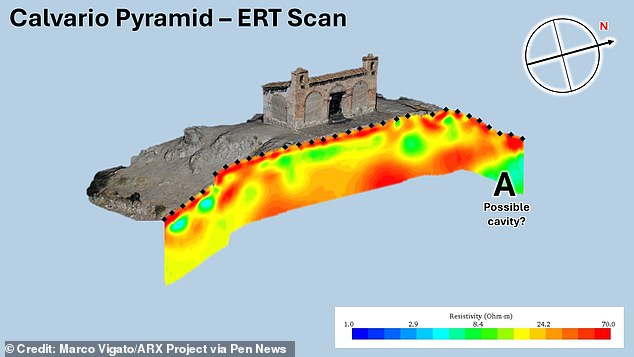
Using non-invasive techniques, archaeologists recently revealed a series of chambers and tunnels beneath the city
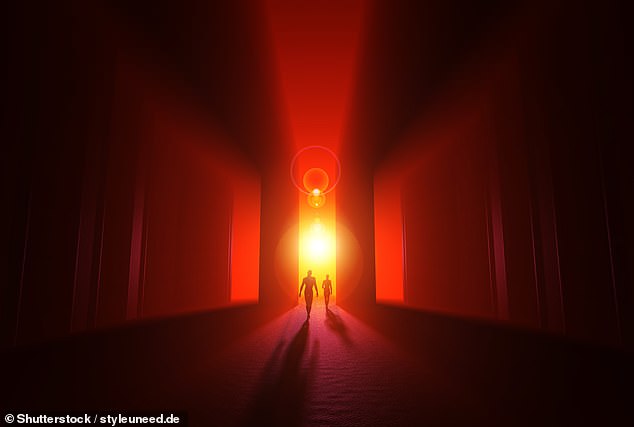
Archaeologists have discovered what they call the ‘back door to hell’ in tunnels beneath an ancient church (stock image)
‘In the case of the southern group they are up to 30 meters deep – this is as far as the instruments can penetrate.
‘One room under the Church of San Pablo Apostol is about 15 meters long and 10 meters wide.
‘It is possible that the tunnels, especially those under the church group, extend further north, east and south.
“They may join other geophysical anomalies identified among the other groups.”
If these are the legendary tunnels, the Zapotec kings may lie within.
Francisco de Burgoa, the aforementioned priest, paints a picture of the royal burial chamber in his 1674 text, Geografica Descripción.
He says the kings were buried ‘richly dressed in their best attire’, with ‘feathers, jewels, gold chains and precious stones’.
Their bodies, meanwhile, hold “a shield in the left hand and a spear in the right, just as they used in war.”
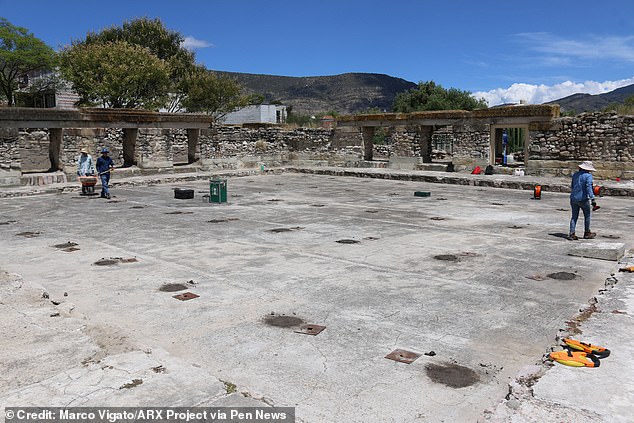
Five different ruins were examined: the church group, the arroyo group, the adobe group, the south group, and the columns group.
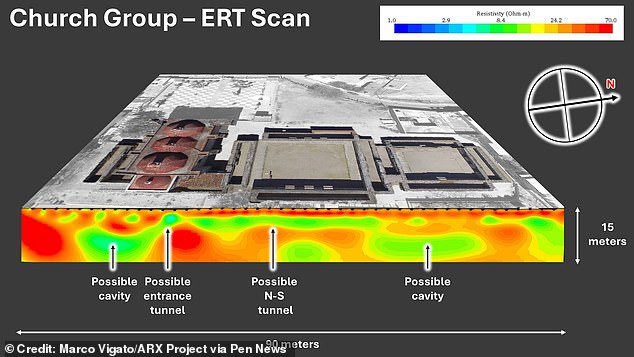
The underground tunnels were revealed using a combination of ground penetrating radar, electrical resistivity tomography and seismic noise tomography.
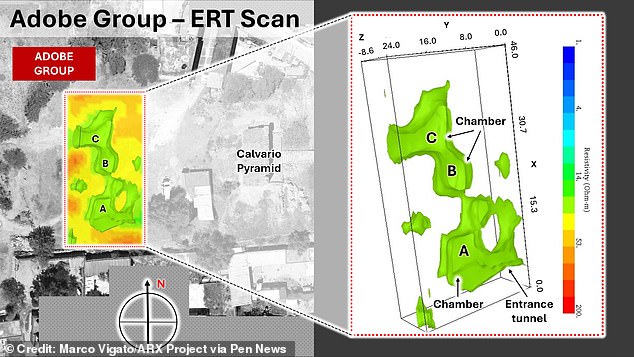
Instead of electricity, seismic noise tomography measures the speed at which seismic waves move through the ground
Two other caves he describes contained a chapel and a burial chamber for the Zapotec high priests respectively.
The last room, he says, leads to “a dark and gruesome room” where “they threw the bodies of the victims of the great lords and chieftains who had fallen in battle.”
Mr. Vigato said: ‘The Zapotecs believed that the caves and underground labyrinth beneath Mitla were an entrance to the underworld, or Lyobaa.
“For this reason, Mitla was the center of the cult of Pitao Bezelao, the Zapotec god of death and the underworld, and was for centuries the burial place of the Zapotec kings and high priests.”
It is no coincidence that there was a void under the church altar.
Mr Vigato said: ‘The church was deliberately built on top of the main Zapotec temple in Mitla.
‘It was a way to transform an already existing religious site and symbolize the triumph of the new faith.
‘A significant part of the ruins were incorporated into the foundations of the church, which was built with stones removed from the old buildings.’
The underground tunnels were revealed using a combination of ground penetrating radar, electrical resistivity tomography and seismic noise tomography.

This photo shows the interior of the Church of San Pablo Apostol in Mitla
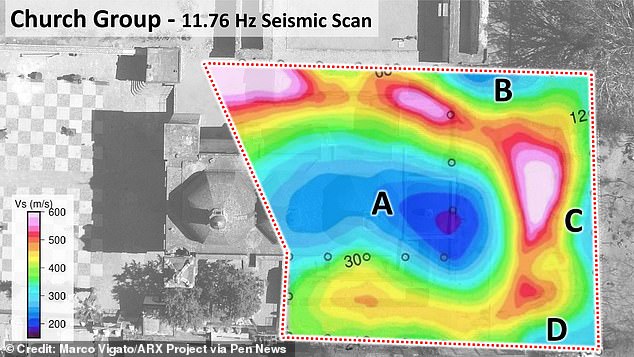
The researchers now hope to determine the nature of the cavities identified beneath the site and whether they contain artefacts of archaeological significance.

The tunnels were discovered under a church in the ancient city of Mitla
The first method uses radar waves to model the subsurface, while the second method detects underground structures by measuring the flow of electricity through the earth.
Instead of electricity, the latter method measures the speed at which seismic waves move through the ground.
The age of the tunnels has yet to be determined.
Mr Vigato said: ‘Natural caves in the Mitla area have been inhabited and partially modified by humans for thousands of years.
‘The earliest evidence of crop domestication in the Mitla area dates back almost 10,000 years ago.
‘There are currently no indications about the possible age of the tunnels under the church or the other groups of structures in Mitla.
“Maybe they were made by the Zapotecs, but they could also be much older.”
He added: ‘The findings of the geophysical scans will need to be confirmed with archaeological methods.
‘This could determine the nature of the cavities identified beneath the site and whether they contain artefacts of archaeological significance.’
More information about the discoveries at Mitla can be found at www.arxproject.org.
